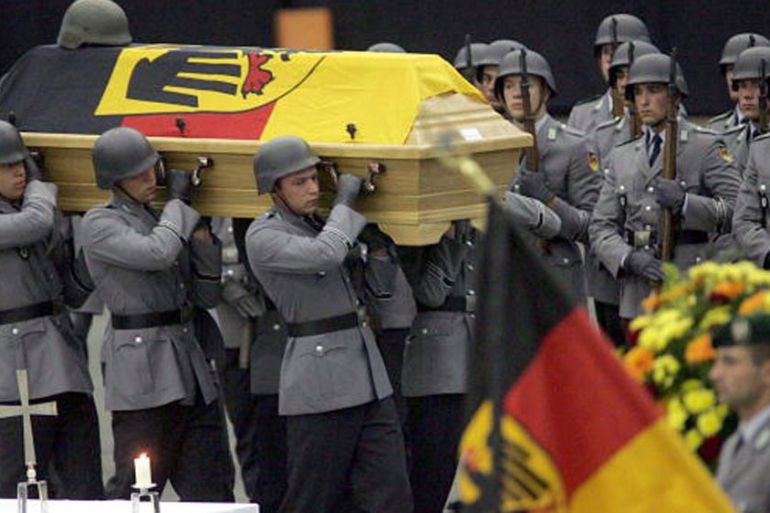Kunduz was always vulnerable
Only with a functioning Afghan government can future Taliban victories be avoided.

As Afghan security forces fight to recapture the northern city, much has been revealed about the weakness of the Afghan government.
Last Wednesday, the United States-backed Afghan government in Kunduz finally collapsed. Around 2,000 Taliban commanders and other fighters with long, dark hair, some wearing white running shoes and carrying smartphones, needed only two hours to take over a town of around 300,000 inhabitants.
Keep reading
list of 4 itemsPhotos: Tourist numbers up in post-war Afghanistan
Taliban ban on girls’ education defies both worldly and religious logic
Afghanistan calls for ‘respect’ after Cricket Australia snub
The occurrence was not a surprise: The fall of Kunduz was never in question; it was simply a matter of time.
|
|
| Taliban fighters capture Afghan city |
Some say the tragedy shows the potency of the Taliban. But the fall of Kunduz reveals much more about the weakness of the Afghan government than about the strength of the Taliban.
After years of systematic failures by the Afghan government and its international allies, the city had been rendered weak and unstable. As one Taliban soldier told me: “Kunduz was just the easiest to take.”
The Western military intervention misdiagnosed areas like Kunduz from the beginning. They were convinced the problems could be solved with extra troops, weapons, and bullets. That’s where the trouble started.
Analysts recently highlighted the vulnerability of Kunduz. “They [the government] were not aware of the complexities on the ground,” stated a report by the think-tank, Afghanistan Analyst Network. Areas like Kunduz clearly show the social and political complexities of power-sharing in local government.
Instead of more or less US troops, the international community should have looked into diplomatic possibilities to tackle factionalism and rivalries among the groups.
Also read: Is an ‘Afghan Awakening’ the solution?
This has been the case for all areas of Afghanistan, but it is especially true for Kunduz. The province has always been one of the most fragmented in Afghanistan. No ethnic group can claim an outright majority in Kunduz, which makes effective leadership challenging.
The population is about 34 percent Pashtun, 27 percent Uzbek, and 23 percent Tajik, according to Afghan statistics, alongside smaller groups. The Pashtun are also relatively new to Kunduz – they arrived through forced migration in the 19th century, which also created problems.
The civil war of the early 1990s also exacerbated divisions in the province. Year after year, the area was plagued by internal fighting which resulted in atrocities, looting and a constant shift in tribal alliances.
What is required to help is for the US to focus less on military intervention and come up with a plan for the entire country that is based on a complex approach to diplomacy and mediation.
Due to its proximity in South Asia, local commanders and militiamen became heavily involved in the drug trade, which intensified the conflict.
During their previous regime, the Taliban had also experienced difficulties taking Kunduz. As their hold on the country intensified, Kunduz was one of the last provinces to fall under their control in 1997.
The recent conflict in the city escalated when US and German troops arrived in 2003 to support one or two factions related to the government of former President Hamid Karzai – notably, groups loyal to the late power broker, General Daoud Daoud.
Evidence suggests that the Pashtun were underrepresented. The resulting situation worsened the power balance considerably with local chieftains accusing other, less influential groups of siding with the Taliban.
When the security situation worsened in 2009 and 2010 in Afghanistan because of continuous infighting, the US set up a new militia called Afghan Local Police (ALP). In Kunduz, five districts saw the arrival of these groups, each comprising of around 200 militiamen.
|
|
| Inside Story – Has US foreign policy failed in Afghanistan and Iraq? |
The International Crisis Group suggested in a recent report that the ALP contributed to the insecurity of the province. In the districts policed by the ALP, violence reportedly rose by at least 20 percent. The ALP has been accused of imposing illegal taxation and contributed to looting, rape, robbery, murders, and summary executions.
US warplanes have now returned to Kunduz to reinstall the severely weakened Afghan government. In the US, Congress will probably soon discuss the next round of military assistance for Afghanistan. But those discussions will prove fruitless in the absence of a functioning Afghan government.
There is also the added danger that an increase of troops and support for the Afghan army might exacerbate the situation because of weak governmental guidance.
The problems of Kunduz have little to do with a lack of US military presence or more rigorous training of Afghan security forces.

What is required to help is for the US to focus less on military intervention and come up with a plan for the entire country that is based on a complex approach to diplomacy and mediation.
Afghanistan’s future depends on proper political representation in all levels of local government. Only with a functioning Afghan government – that serves its people – can future Taliban victories be avoided.
Bette Dam worked and lived in Afghanistan for eight years and is the author of “A Man and a Motorcycle: How Hamid Karzai came to Power“. She is currently writing a biography of Mullah Omar.
The views expressed in this article are the author’s own and do not necessarily reflect Al Jazeera’s editorial policy.
